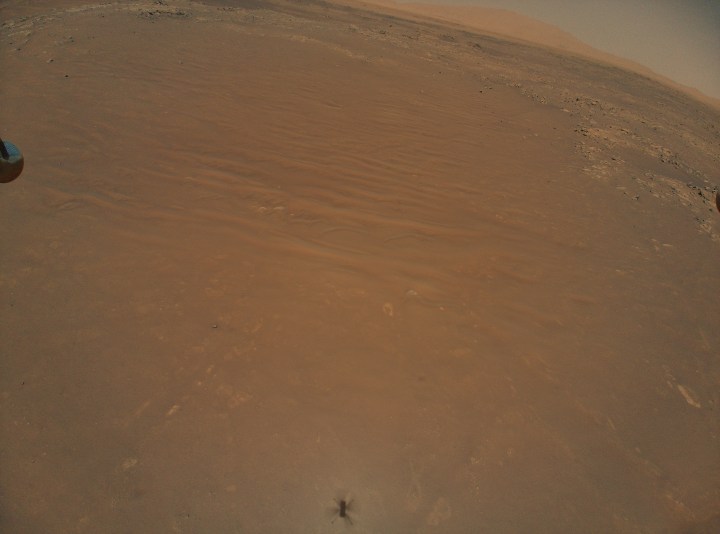
The Mars helicopter Ingenuity continues zipping around above the Martian surface, recently completing its eleventh flight and taking photos as it went. In some of these photos, captured on August 4, the helicopter snapped its rover buddy Perseverance in the South Séítah region of the Jezero Crater.
“Ingenuity’s aerial images are awesome — but even better when you get to play ‘Where’s Perseverance?’ with them,” said Robert Hogg, Deputy Mission Manager for the Mars 2020 program at NASA’s Jet Propulsion Laboratory. “Once you find our rover and zoom in, you can make out some details, like the wheels, remote sensing mast, and the [Multi-Mission Radioisotope Thermoelectric Generator] on the aft end.”
If you’re playing along at home, see if you can spot the rover in the image above. You can see the shadow of Ingenuity in the center-bottom, and up from this, toward the top of the image, just a little bit to the right, there’s a white speck. That’s Perseverance, as seen from 1,600 feet away and 39 feet in the air.
Having fulfilled its function as a technology demonstration — essentially proving that flying a helicopter on another planet is possible — Ingenuity is now helping out Perseverance by scouting ahead to photograph scientifically interesting features. Its latest flight took it to a new staging area from where it will explore the South Séítah region.

A more clear image of the rover was also captured during the same flight, showing Perseverance working on its mission of searching Mars for evidence of ancient life there. Recently, the rover attempted to collect its first rock sample, although it didn’t end up working out. It seems that the Martian rock in this area is behaving a little differently than expected — a familiar issue that has caused problems for other Mars explorers like the InSight lander in the past.
But the good news is that the problem is with the rock, not with the rover’s sample collection system, so Perseverance should be able to collect samples from other areas successfully.



